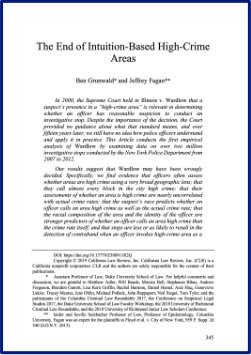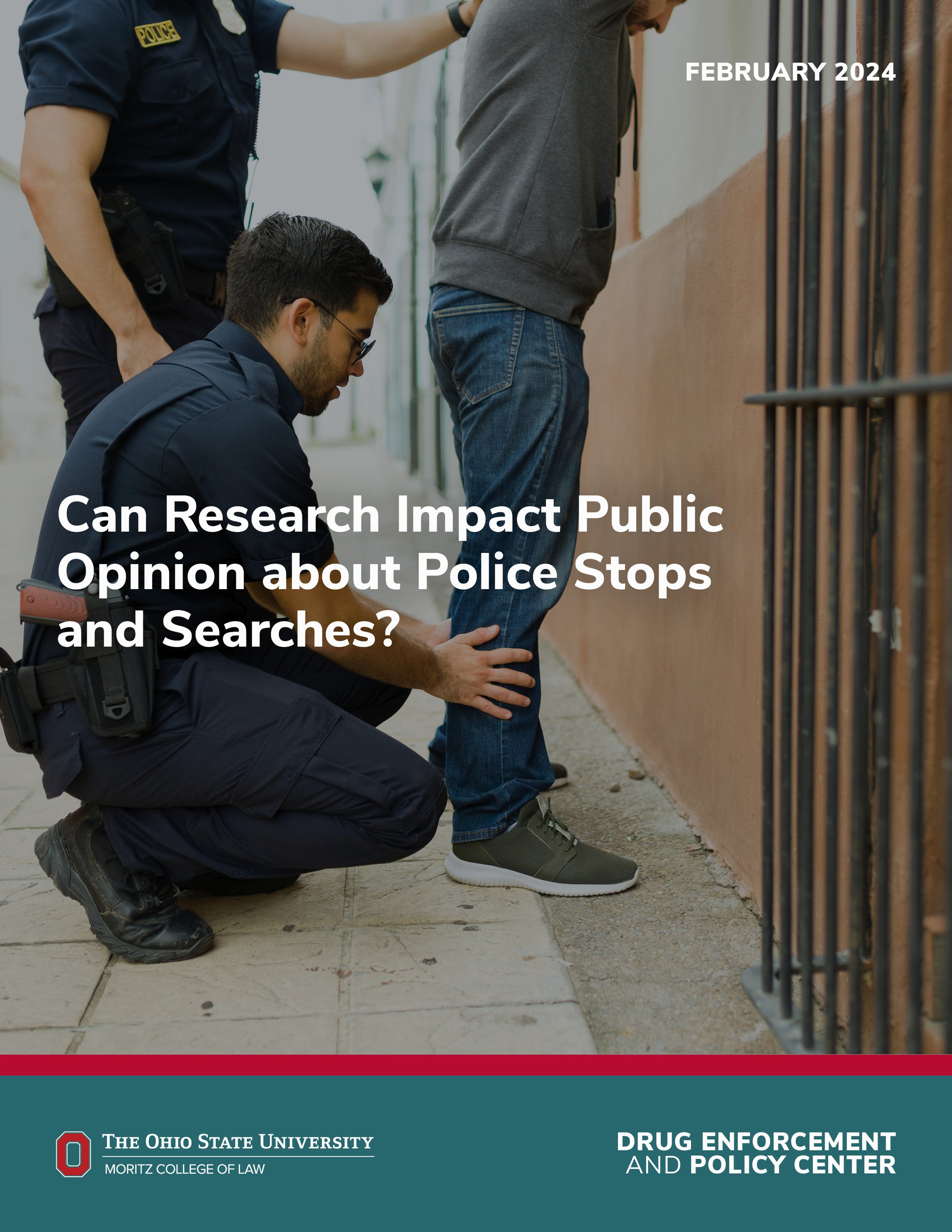By Jessica Reichert, Sharyn Adams, H. Douglas Otto, Julia Sanchez
East St. Louis, Illinois has experienced high rates of violent crime including homicide. In 2019, the city’s homicide rate was 137 per 100,000 residents, which was considerably higher than the state rate and the Chicago rate (Federal Bureau of Investigation [FBI], 2019). Victims of violent crime may have many service needs, such as behavioral health counseling, medical care, legal services, housing, and financial assistance (Aeffect, Inc., 2017). Many crime victims come to the attention of police, so a program was developed in East St. Louis to refer victims to services they need. The East St. Louis Community Engagement Response Team (ESL-CERT) was created to refer victims of crime to necessary services using a law enforcement task force (composed of dedicated Illinois State Police officers) working on violent crime cases in East St. Louis. The program is considered a “deflection” program in which law enforcement and other first responders (or co-responders) connect individuals to treatment and/or other social services thereby deflecting them from emergency services, crisis interventions, and justice involvement (Firesheets et al., 2022; Kelly et al., 2022; Lindquist-Grantz et al., 2021). The program assists crime victims, so there is no threat of potential arrest charges. This evaluation examined the ESL-CERT’s action planning process. Local stakeholders met virtually for 21 hours over seven days to develop the program’s Solution Action Plan (SAP). Action planning is a way to increase community engagement, develop clear and concise program goals, and create strategies to effectively achieve those goals (Creatly, 2021). The action planning work culminated in an action plan with objectives, strategies, and steps needed to aid in program implementation. Methodology To avoid the risk of spreading COVID-19 in 2021, the action planning process was held virtually via Zoom for three-hours per day for seven days. Representatives of several local community agencies and groups participated; 30 participated in at least one session from 23 organizations and 14 organization types. There were 30 community representatives, with attendance ranging from 12 to 19 participants per session. In addition to local participants, 26 representatives from outside of the community [Illinois Department of Human Services (IDHS), Treatment Alternatives for Safe Communities (TASC), Illinois Criminal Justice Information Authority (ICJIA), and Police, Treatment, and Community Collaborative (PTACC) and subject matter experts] attended at least one session each. ICJIA researchers also provided a local crime victim data presentation on day 6. To evaluate the action planning procedure, the ICJIA research team examined a variety of data sources, including field observations, supporting documents, and participant surveys. The secretary of the ICJIA Institutional Review Board approved the proposed research as a program evaluation. Three researchers completed 21 hours of field observations of the action planning process from June 30, 2021, to August 8, 2021. All action planning sessions were conducted and recorded virtually through Zoom Video Conferencing. A total of 30 community members participated in at least one of the seven sessions. After each session, we administered a survey to action planning participants using the Zoom poll feature. The survey included questions about the action planning process, collaboration with other participants, and their intentions of post-action planning with responses on a 4-point Likert scale. Respondents totaled between seven and 20 respondents per day. Finally, we administered a second online survey using Qualtrics software. The survey included questions about participants (e.g., demographics information) and one open-ended question requesting their thoughts on the action planning process. A total of 13 participants responded. Data Analysis We analyzed field notes and supportive documents. We summarized what transpired sequentially for each of the seven days of action planning as the group built on the previous day’s work in each session. The Zoom platform poll data was exported in Excel for data analysis and the online survey was exported from Qualtrics to Excel for data analysis. We analyzed the poll and online survey data to generate descriptive statistics. Study Limitations We encountered some limitations while conducting this evaluation. First, we could only draw from what was said during the sessions. Participants’ internal thoughts and feelings could only be collected through brief, close-ended poll questions. Second, the participants changed each day because many could not attend all seven sessions leading to varying levels of participation in the action planning and polls. Third, while a number of reminders were sent to the group, only 13 participants responded to the online survey to gather participant demographics. Fourth, COVID 19 precipitated the need for virtual action planning, which had its challenges. For example, because of the large number of participants on the virtual platform, it was difficult to discern who was speaking. Finally, as Chicago-based researchers, we were relative outsiders. Without living or working in their community, it was difficult for us to ascertain group dynamics or potential interpersonal issues and understand historical and community context. Key Findings We noted a number of key findings on action planning participants, engagement, and discussions, as well as participant feedback on the action planning process. The survey, taken by 13 action planning participants, revealed most were female, White, non-Latinx, earned master’s degrees and incomes over $90,000, had over 20 years of experience in various fields such as social services and criminal justice, and were an average age of 52. A poll taken by seven participants on the last day showed five worked in East St. Louis and lived in a city outside of East St. Louis. The group members engaged in discussions to develop the violent crime victim program. Action planning discussions covered many areas, including: • Program purpose, capacity, eligibility, and name. • Community issues, partners, and awareness. • Outcome measures and strategies. • Training needs and topics. • Service provision. • Data and evaluation. During our observations of action planning, we noted that at times, likely exacerbated by the virtual format, it was a challenge to engage some action planning group members. In addition, some participants were initially confused about the action planning process and the program model. Finally, some participants had difficulty formulating measurable objectives. Overall, based on our surveys, participants were pleased with, and supportive, of the action planning process and the program. All participants reported the planned program would help victims of crime somewhat to a great extent. Also all indicated they would be likely or very likely to take an active role in implementation and that the program would be somewhat to very sustainable. However, three of seven participants noted the program had weak community engagement during the action planning process. Ultimately, the discussions culminated in an action plan document—the Solutions Action Plan— with objectives and action steps for the next phase of the program: implementation. The action plan contained four outcomes, 11 strategies, and 21 action steps. Recommendations Based on the evaluation findings, we offered recommendations for action planning. Suggestions to enhance participant understanding and encourage individual engagement on a virtual platform included providing data and background information, personalized invitations, regular introductions, a designated feedback loop, and the use of poll questions to aid in discussion. Another recommendation is to engage a more diverse pool of participants (e.g., East St. Louis residents and younger participants) and limit the number of outsiders participating in action planning. Finally, we recommend setting program goals and using a logic model to ensure all objectives are measurable. Conclusion - Overall, the action planning process resulted in a plan to implement a new deflection program to assist victims of violent crime in East St. Louis. The action plan document contained four objectives, 11 strategies, and 21 action steps. The next steps for the program after action planning, was implementation of the program in which the group would work on completing their action steps. Ultimately, this program supports goals of the Illinois Statewide Violence Prevention Plan including collaborations, pro-social programming, and comprehensive case management and clinical support for victims (Garthe et al., 2021).
Chicago: Illinois Criminal Justice Information Authority, 2023. 75p.














